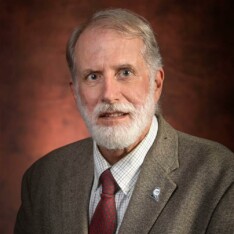Reprinted from the Independent Institute
The capture theory of regulation, popularized in an article by Nobel laureate George Stigler, concludes that regulatory agencies become “captured” by the firms they regulate. Regulatory agencies act in the best interest of the firms they regulate rather than serving the general public interest.
Regulatory capture partly occurs because regulated firms have a concentrated interest in regulatory outcomes. In contrast, the general public has a diluted interest. Regulated firms have a large incentive to influence regulatory agencies. Most members of the general public have almost no incentive to do so.
Assume, for example, that a regulatory protection for a firm would cost each of one million customers of that firm $5, which would then be transferred to the firm. Individuals have little incentive to mount any opposition to that $5 cost they bear, whereas the firm would stand to gain $5 million from the regulation. The firm will lobby hard for the regulatory protection, whereas most consumers probably will be unaware that the regulation even exists.
A good real-world example is the mandate that motor fuels include ethanol. There is little consumer backlash against this, even though we know consumers would prefer motor fuels without ethanol. (Otherwise, there would be no reason to mandate it.) Meanwhile, corn farmers and processors reap an enormous benefit from the mandate in exchange for a small cost imposed on many consumers.
Regulated firms have other advantages too. A big one is that information which the regulatory agency uses to regulate the firm comes directly from the firm, so the firm can control that flow of information to its advantage. Another advantage is that regulators and the regulated are likely to know each other personally and want to remain on good terms with their friends.
The title of this post is also the title of an article I published recently in the Journal of Private Enterprise, which adds to this theory of regulatory capture. For a regulation (and regulatory agency) to be created in the first place, it would have to provide some advantage to its creator.
The advantage to the creator is that the regulated firm becomes dependent on the continued flow of benefits from the regulation. Should the regulation be repealed, the regulated firm will suffer a loss, perhaps severe enough to bankrupt the firm. So, regulated firms must continue to pay off legislators and regulators to maintain that favorable regulatory environment.
Decades ago, airlines were regulated to restrict competition among them. When airlines were deregulated in 1978, the loss of this regulatory benefit bankrupted many of them. What happened to Eastern Airlines? Braniff? Pan American? TWA? They were victims of deregulation.
To avoid a similar outcome as the airlines, regulated firms are incentivized to support the politicians and legislators who have the power to continue or terminate existing regulations. Regulation provides a benefit to regulated firms, as Stigler explained. Still, it also creates a dependence of those firms on the continuation of regulation.
Thus, politicians are in a position to extract payment from those regulated firms. Firms can hope to preserve a favorable regulatory environment by providing campaign contributions and other political support.
The ultimate result is that regulated firms are “captured” by legislators and regulators. In exchange for regulatory protections, those firms become dependent on continued regulation. They must continue to pay up—whether literally or figuratively—to maintain their regulatory protections.
Disney provides an example of what happens when firms do not support those with the power to continue their regulatory protections. In 1967, Florida’s state government essentially allowed the company to create its own government to run Walt Disney World. In 2022 the company opposed legislation supported by the Florida legislature and Governor DeSantis. In response, the legislature repealed their privilege to self-govern.
Firms that benefit from regulatory protections must continue to support the legislatures that can reverse those protections, or they will lose them. Stigler concluded that regulatory agencies are captured by the firms they regulate. Still, ultimately, it is the regulated firms that become captured by the legislators and regulators who have the power to terminate their regulatory protections.




